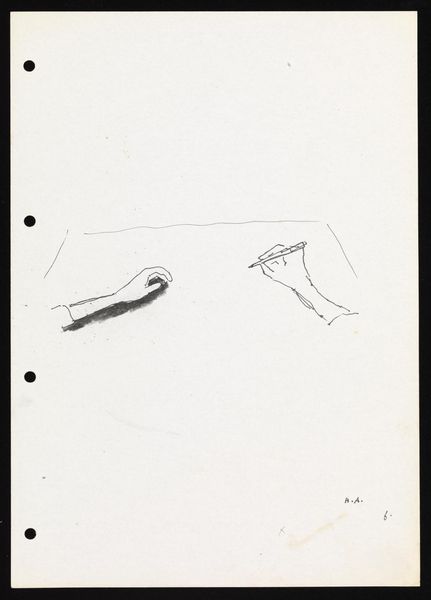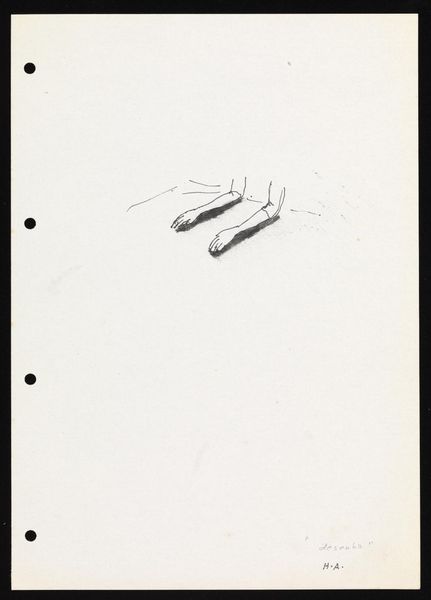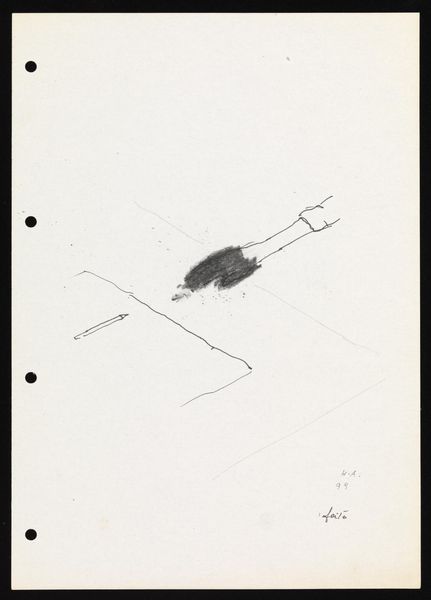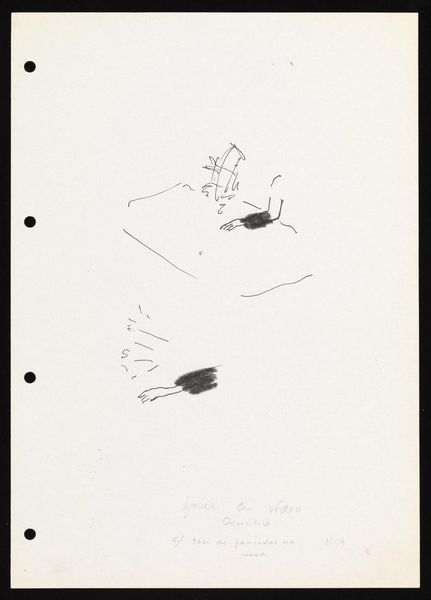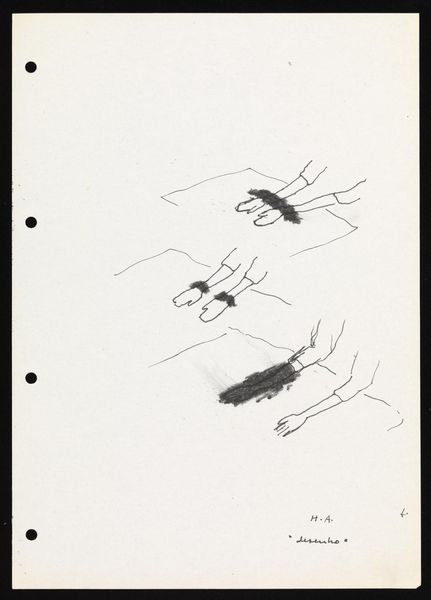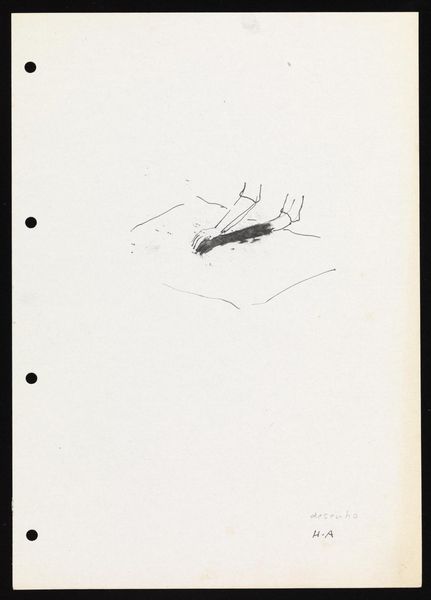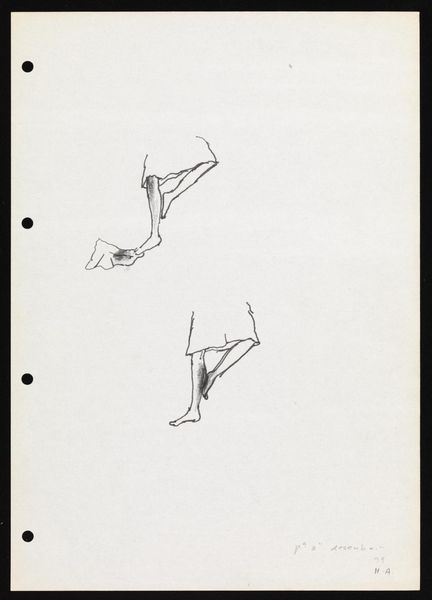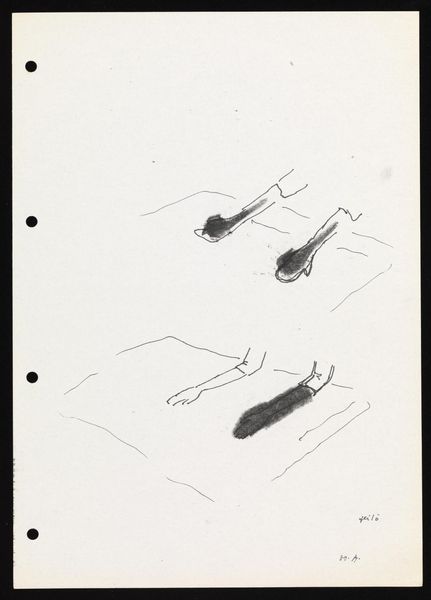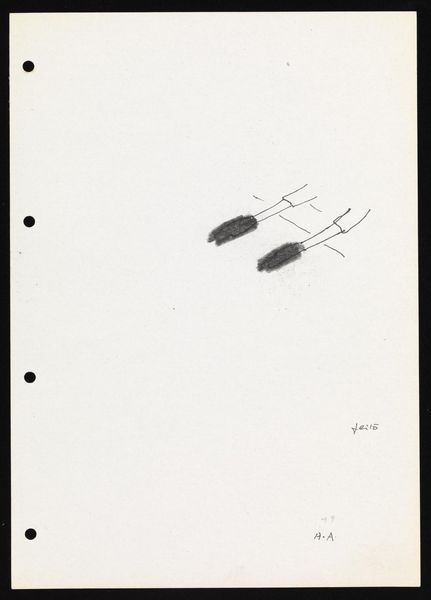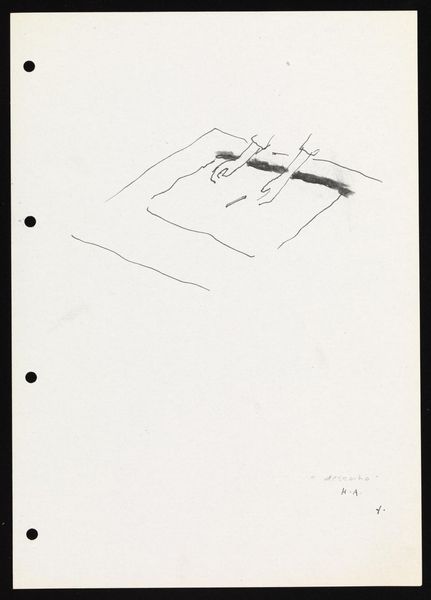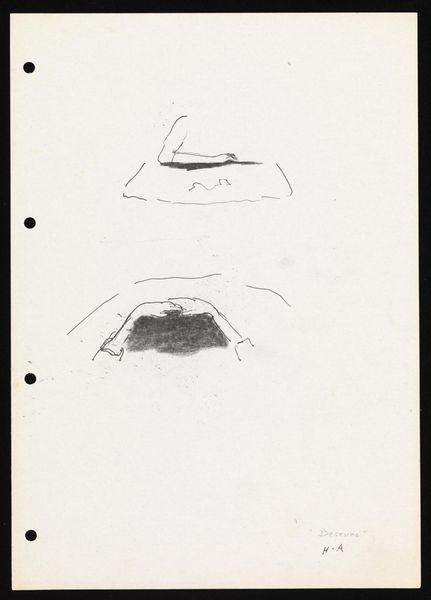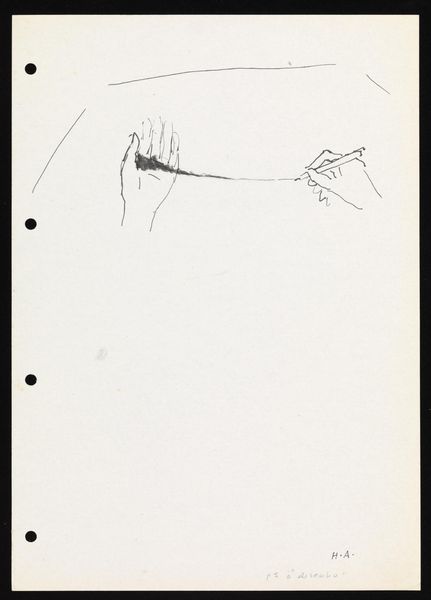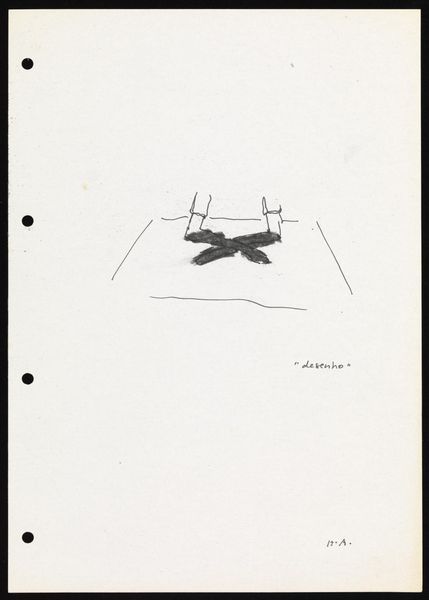
Dimensions: support: 294 x 208 mm
Copyright: © Helena Almeida | CC-BY-NC-ND 4.0 DEED, Photo: Tate
Curator: Here we have Helena Almeida’s “Drawing (with pigment),” held in the Tate Collection. Editor: It's immediately striking—the starkness, the isolated hands. There's a sense of almost desperate creation, or perhaps the opposite—a sterile, detached act. Curator: Almeida, born in 1934, often explores the female body and lived experience through her work. This drawing, though simple in its execution, is full of socio-historical concepts. The hand itself becomes a tool—a feminine tool—for inscription. Editor: Absolutely. The gesture of writing, who is allowed to write, whose stories get told... it all speaks to power dynamics, especially given Almeida's broader body of work challenging patriarchal narratives. What narratives do we authorize, and what narratives are erased? Curator: Indeed. And how the act of "drawing" becomes performative, a commentary on its own creation. Editor: It really invites us to question the nature of representation itself. Curator: A potent reminder of the politics embedded in every mark we make. Editor: Yes, a simple image that generates complicated ideas.
Comments
tate 8 months ago
⋮
http://www.tate.org.uk/art/artworks/almeida-drawing-with-pigment-t13461
Join the conversation
Join millions of artists and users on Artera today and experience the ultimate creative platform.
tate 8 months ago
⋮
This is one of thirty-eight drawings in Tate’s collection by Almeida, all of which are rendered in ink, pen and pigment on sheets of off-white A4 paper. Each sheet has four holes punched down one side, and a number of the sheets have drawings on both sides. The images consist of simple line drawings, overlaid with passages of dense pigment. Each depicts the artist’s body in whole or in part. Many detail her hands, often in the act of drawing. Other images show the artist’s legs, arms or torso, or show her performing an action: dragging an unidentifiable mass that is attached to her ankle by a rope, or pushing her prone body up from the floor.
